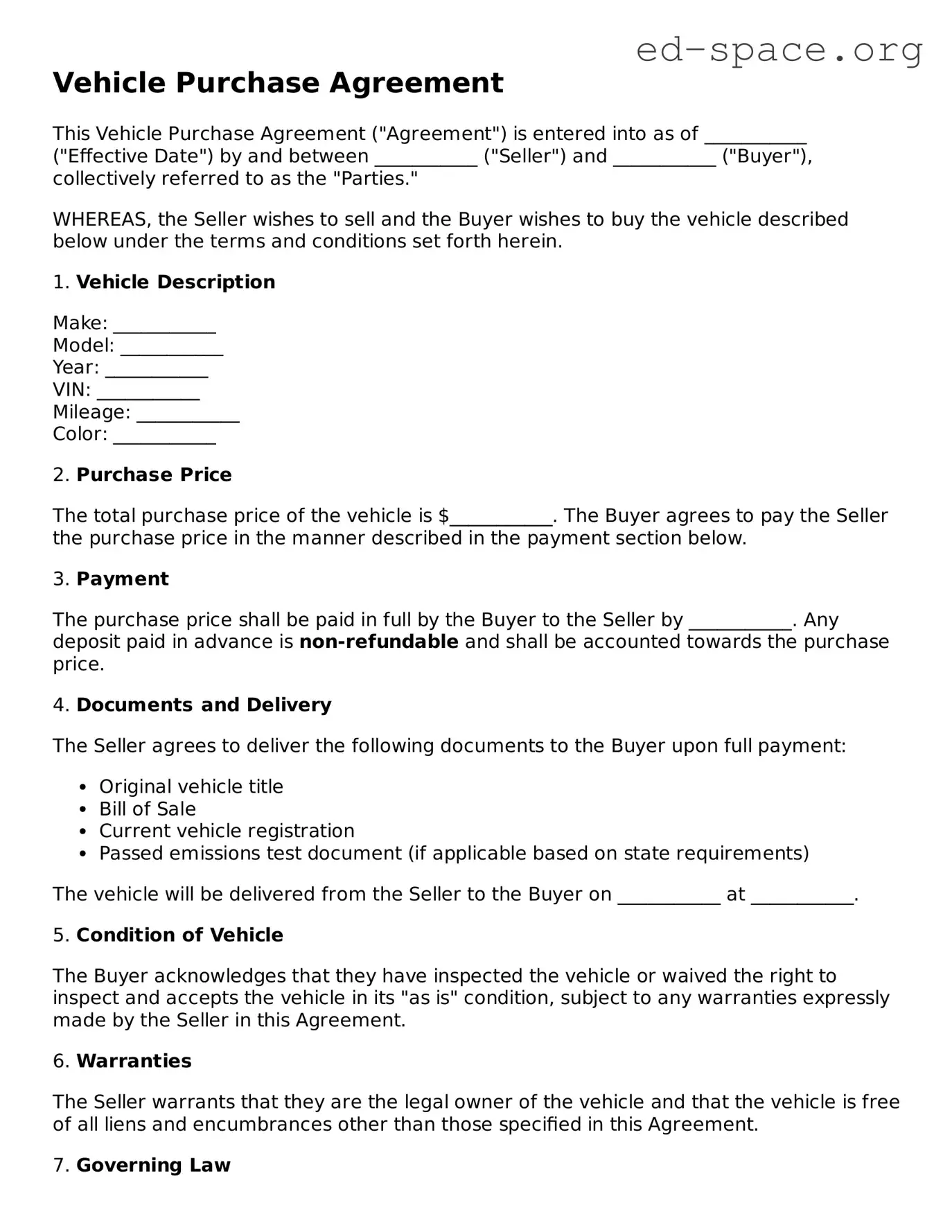Vehicle Purchase Agreement
This Vehicle Purchase Agreement ("Agreement") is entered into as of ___________ ("Effective Date") by and between ___________ ("Seller") and ___________ ("Buyer"), collectively referred to as the "Parties."
WHEREAS, the Seller wishes to sell and the Buyer wishes to buy the vehicle described below under the terms and conditions set forth herein.
1. Vehicle Description
Make: ___________
Model: ___________
Year: ___________
VIN: ___________
Mileage: ___________
Color: ___________
2. Purchase Price
The total purchase price of the vehicle is $___________. The Buyer agrees to pay the Seller the purchase price in the manner described in the payment section below.
3. Payment
The purchase price shall be paid in full by the Buyer to the Seller by ___________. Any deposit paid in advance is non-refundable and shall be accounted towards the purchase price.
4. Documents and Delivery
The Seller agrees to deliver the following documents to the Buyer upon full payment:
- Original vehicle title
- Bill of Sale
- Current vehicle registration
- Passed emissions test document (if applicable based on state requirements)
The vehicle will be delivered from the Seller to the Buyer on ___________ at ___________.
5. Condition of Vehicle
The Buyer acknowledges that they have inspected the vehicle or waived the right to inspect and accepts the vehicle in its "as is" condition, subject to any warranties expressly made by the Seller in this Agreement.
6. Warranties
The Seller warrants that they are the legal owner of the vehicle and that the vehicle is free of all liens and encumbrances other than those specified in this Agreement.
7. Governing Law
This Agreement shall be governed by and construed in accordance with the laws of the State of ___________.
8. Dispute Resolution
Any disputes related to this Agreement will be resolved through negotiation between the Parties. If the dispute cannot be resolved, the Parties agree to seek resolution through binding arbitration in the State of ___________.
IN WITNESS WHEREOF, the Parties have executed this Agreement as of the Effective Date first above written.
Seller's Signature: ___________ Date: ___________
Buyer's Signature: ___________ Date: ___________
